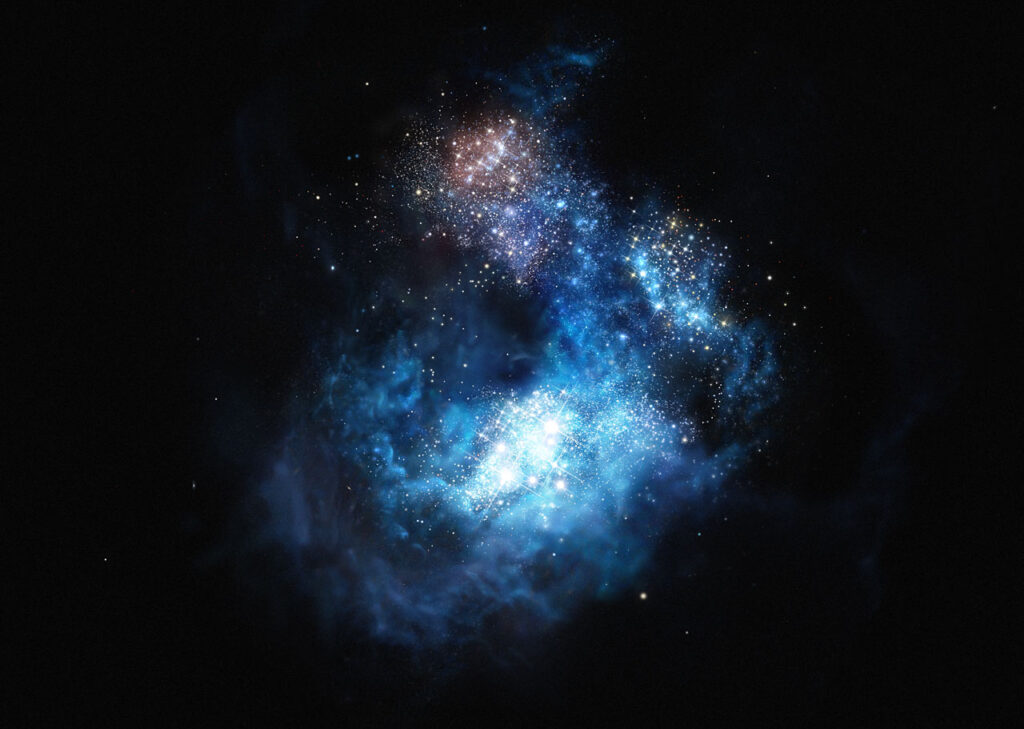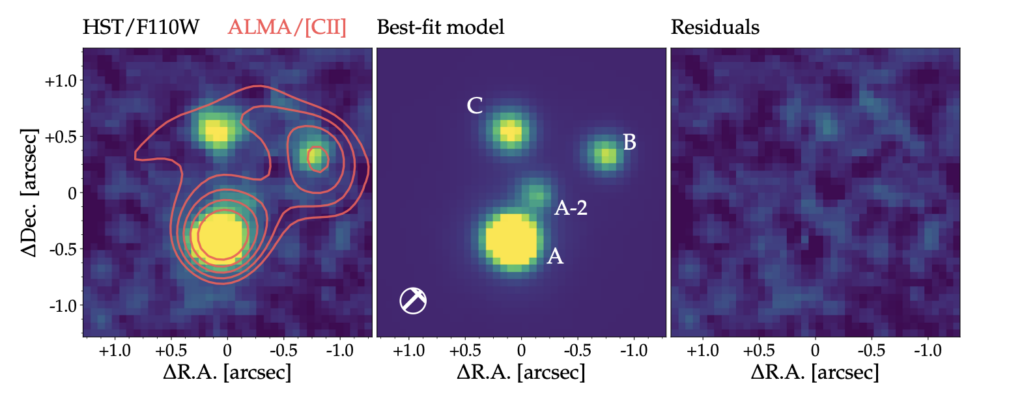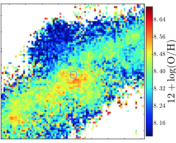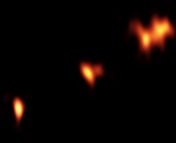Title: The nature of CR7 revealed with MUSE: a young starburst powering extended Lyman-α emission at z=6.6
Authors: Jorryt Matthee, Gabrielle Pezzulli, Ruari Mackenzie, Sebastiano Cantalupo, Haruka Kusakabe, Floriane Leclercq, David Sobral, Johan Richard, Lutz Wisotzki, Simon Lilly, Leindert Boogaard, Raffaella Marino, Michael Maseda, and Themiya Nanayakkara
First Author’s Institution: Department of Physics, ETH Zürich
Status: Open access on arXiv, accepted for publication by MNRAS
The distance astronomers can “see” is limited by the age of the universe, in addition to being limited by current technology. Despite seeming instantaneous, light travels at a finite speed – specifically 3×108 m/s, or 186,282 miles per second for fans of the imperial system. In our daily lives, this isn’t a big deal because the distances the light needs to travel are negligible compared to the speed of light. However, since space is “vastly, hugely, mind-bogglingly big,” the distance is no longer negligible, and astronomers can only observe objects whose light has had enough time to reach us. For example, our Sun is about 150 million km away (or 93.5 million miles), and the light we receive from it takes 8 minutes to travel from the Sun to the Earth and 5.5 hours to reach Pluto. On a larger scale, since the universe is around 13 billion years old, light from the beginning of the universe has been traveling for around 13 billion years. That means the furthest things we can observe are the oldest, and we see them as they were around 13 billion years ago rather than how they are now. This makes them good indicators of what the early universe was like.
Using spectroscopic studies, some of these early objects have been classified as Lyman-α Emitters (LAEs). LAEs, perhaps unsurprisingly, are galaxies that emit “Lyman-α radiation” from hydrogen, but what does that even mean? Well, spectroscopy in general is the study of the electromagnetic spectrum that different objects give off, specifically the emission and absorption of photons when electrons transition between energy levels in an atom. The Lyman series – consisting of Lyman-α, Lyman-β, Lyman-γ, etc. – is a special set of ultraviolet emission lines that result from the transition of electrons from higher energy levels to the ground state in the hydrogen atom. Lyman-α specifically is the emission line from the electron transitioning from the first excited state to the ground state. Lyman-α Emitters are generally extremely distant and extremely young, and can be used to study the Epoch of Reionization and early galaxy formation. Usually, Lyman-α is so energetic that it is absorbed by neutral hydrogen, which was predominant in the early universe, after expansion and cooling. That means that LAEs must have formed later, just as the universe began to reionize, because Lyman-α radiation can make it through ionized hydrogen. This period of reionization corresponds to when star and galaxy formation really kicked in, so the increased formation rates are thought to be the source of the reionization. So, if we look at an LAE, we’re looking at potential progenitors for reionization and galaxy formation.

Amongst these LAEs is the galaxy Cosmos Redshift 7 (CR7), named as a nod to Portuguese footballer Cristiano Ronaldo (see, some astronomers do care about sports!). Discovered in 2015 using the Very Large Telescope (VLT), CR7 is one of brightest known LAEs at a redshift of z > 6.0 and was initially thought to show some indicators of both Population III stars – the first generation of stars, containing very few “metals” – and of a direct collapse black hole. CR7 has three distinct UV regions (Figure 2), two of which are made up of older The authors of today’s paper use the Multi-Unit Spectroscopic Explorer (MUSE) instrument on the VLT combined with near-infrared archival data from Hubble’s Wide Field Camera 3 (WFC3) and ESO’s UltraVISTA to do an in-depth study of CR7’s morphology.

Black Holes and Revelations
Using MUSE, the authors are able to obtain a very detailed spectrum of CR7. From this spectrum and information from the archival data, the authors reach a few main conclusions:
- The Lyman-α emission in the spectrum is very smooth and can be described by a UV core with two components and a halo profile surrounding it.
- The equivalent width (EW) – essentially the size – of CR7’s Lyman-α line indicates an extreme source of ionization, such as a young starburst or an Active Galactic Nucleus.
- The spectral lines of CR7 align well with those of galaxies at z = 0.2-0.3 that are considered to be analogues of high redshift galaxies. However, the EWs are about a factor of 4 larger in CR7.
- The IR to UV ratios of CR7 and Lyman-α emitting AGNs at z = 2-3 suggest that CR7’s source cannot be an AGN, because its IR/UV ratio would have to be a factor of 10 higher to escape the dust that normally obscures these AGN.
Putting all of this together, they conclude that CR7 probably has a similar progenitor to the lower redshift LAEs: a young metal-poor starburst – i.e. a region of high star formation rates, not the fruit-flavored candy. The characteristics of the spectral lines establish that it must be a high-energy source, while the IR to UV ratio indicates it can’t be an AGN.
Our Hopes and Expectations (or, Why Does It Matter?)
As mentioned, the most distant objects such as CR7 can be used as windows into the early universe. Understanding more about these objects, especially LAEs, gives us more pieces to the puzzle of early galaxy formation. By looking at LAEs and their properties, we can see what mechanisms in the early universe could have caused the reionization of hydrogen and lead to the structures that we see today. I, for one, find it incredibly nifty that we can learn so much about the beginning of the entire universe from right here on Earth, billions of years later!




